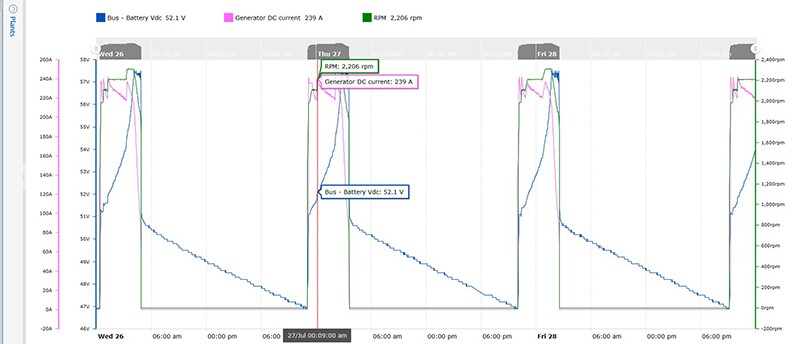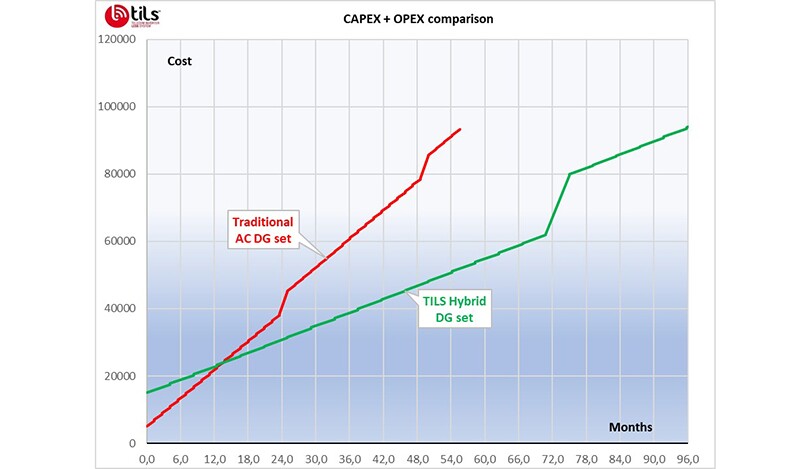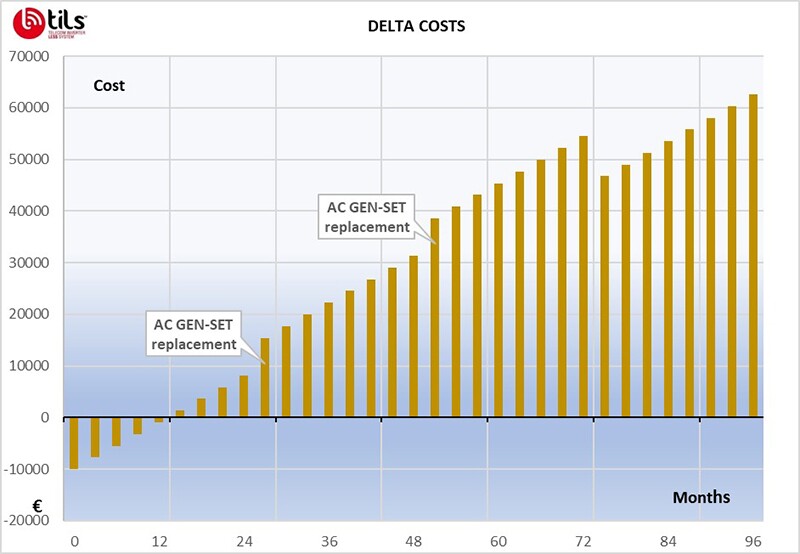TowerXchange: Please introduce TECNOELETTRA to our readers
Davide Zanichelli, CEO, TECNOELETTRA:
TECNOELETTRA is a dynamic Italian company, globally recognised as high quality manufacturer of controllers and innovative solutions for power supply application. The generator market is our core business where we make almost 80% of our turnover and where we can offer a very wide range of solutions and products.
Since 1985 our vision has always been to approach customer needs with enthusiasm and passion for our job, while keeping our focus on creating a customised solution for the customer.
Our WWT2020 (WorldWideTECNOELETTRA2020) strategy is a vision which has transformed TECNOELETTRA from a family (but always independent) company, to a global organisation that works all around the world, directly or through strategic distributors or local partners, while keeping the same passion with which we founded the company 35 years ago.
All our products are 100% made in Italy and a team of specialised engineers for each application permits us to very quickly develop a customised solution to satisfy every request.
In last six years we have focused our efforts trying to lead the telecoms market and honestly I’m so proud and satisfied with our results today. Our solution for the telecoms market is called TILS (Telecom InverterLess System), and thanks to this project we can give incredible benefits and ROI to towercos, service providers and generator manufacturers.
TILS is not only a product, it is a complete solution, a complete package consisting of our HYBRID controller, our PMG alternator and all the components needed to make a DC variable speed hybrid system/generator, plus probably the most advanced remote control of the fleet.
A key point of our TILS controller is the smart-software: behind any function there is the target to keep the BTS alive. It means that in case of an alarm we are not simply shutting down the system, rather the controller looks for a possible solution to bypass the problem and, even with reduced performances, to keep providing energy to the BTS.
TowerXchange: What is TECNOELETTRA’s footprint? How important is the African market to you?
Davide Zanichelli, CEO, TECNOELETTRA:
Africa is our priority 24/7.
We entered into Africa with TILS, and we are already supplying more than 2,000 BTS sites. Thanks to this experience, I can confidently say that TECNOELETTRA now has very deep in the field experience and the hybridisation of telecom sites is our top priority every day.
From this incredible experience we understood and we saw with our own eyes how important it is to support operations in the field and because of this we have a team which is always ready to come over to Africa to assist and provide training to people and customers.
We are creating, with success, a strong commercial distributorship and finding new partners in each African country.
TowerXchange: Can you explain which of your products and services are most popular in African telecoms?
Davide Zanichelli, CEO, TECNOELETTRA:
Looking back at what we have done in the last six years we can see that there are different requests for different applications. We are still manufacturing a lot of panels for dual DG set installations, using a dedicated controller and integrating in a single panel controllers and ATS. This remains one of the strongest products in TECNOELETTRA’s portfolio for the African market and generally for the global telecom market.
But what has become more interesting is our proposal for the hybrid application, where our TILS brand has grown a lot in terms of volume, different configurations and optional availability.
Right now we are present in Africa directly, with our dealers or customers, or through our European and Asian customers which export their product with TILS into Africa.
Our hybrid application offering spreads from components plus panels to practically the full package. We can provide the main components of the TILS kit plus control and power panels. In this case the hybrid DG set manufacturer has to add only an engine, canopy and battery bank and the hybrid unit is done. But through our partners we can also propose different configurations of DG sets, from a basic package without a fuel tank and without a battery bank, to an all-in-one product with 1000 litre fuel tanks and battery banks (with both lead or LIFePO4 technology).
Pre-sales and after-sales are two key points in term of service in the telecom market. The pre-sales activity is mandatory to show to our customer that TECNOELETTRA can be the right partner. We can assist the customer in the design of the power station, and we can follow their requests for customisation. Through our after sales service we are close to our customer during the commissioning of their solution, so we can propose training and we can offer 24/7 assistance through our TRM (Tils Remote Management system). One of our most popular services is the analysis of data collected by the TRM (up to 12 months): with this activity we can suggest how to improve the hybrid system’s performance in situ, so that the customer can see immediate benefits.
TowerXchange: Tell us about your experiences in African telecoms, what do you see as the main hurdles tower owners need to overcome in the short term? Do you have any case study examples to share?
Davide Zanichelli, CEO, TECNOELETTRA:
Hybrid is the answer to a lot of the requests we receive. But hybrid solutions can disappoint if not properly sized. We have often seen the wrong combination of DG set power/battery bank capacity/BTS load. It does not make sense to have a small DG set while there is a big battery bank or a high load. As a consequence the DG set will not be able to properly charge the battery and the result of that will be an hybrid unit running 24/7. TECNOELETTRA can share its knowledge and experience, collaborating with service companies, operators or towercos to help design the full power system. Figure one (a screenshot from the TRM) gives you an idea about the performance of a TILS DG set properly sized; approximately five hours of DG set running followed by approximately 18 hours of standby.
Figure one: Screenshot from TRM (Tils Remote Management)

One of the quotes that remained in my mind from the TowerXchange 2016 Africa and ME report was: “Technology is not the biggest issue – people are.” Skills are scarce when it comes to the installation and maintenance of complex distributed generation systems; make them as simple as possible, and training is key. This is absolutely correct. And this is why we have worked to make TILS as simple as possible, removing components that can fail and introducing the concept of “one brain”: our TILS controller is the only device in the hybrid unit that teams on the ground have to learn. There isn’t an inverter like in a hybrid unit, and there are no other devices that have to be programmed or adjusted according the application. Moreover, the controller can be remotely set to reach the best performance.
We are also aware that the success of our clients is our success. This is why at TECNOELETTRA we follow our products from the commissioning at the customer site, to the field installation, and even later through the TRM (Tils Remote Management). And this is why we push for the training to all the supply chain team. Maybe different training levels, but training on connections, on settings, on installation and on monitoring are mandatory.
TowerXchange: By optimising equipment and reducing service costs, what kind of ROI can TECNOELETTRA customers expect to see?
Davide Zanichelli, CEO, TECNOELETTRA:
The hybrid concept pulls together green energy and OPEX reduction. We cannot forget that the introduction of hybrid units is not only a matter of savings, but it is also a necessity if we want to reduce the ambient impact of the BTS power supply. We have only this world: if the technology allows us to reduce the pollution and the CO2 footprint, it has to be considered.
TILS is a kit created with the clear target of OPEX reduction. There are two levels of savings, one is on the equipment, the other is on the hybrid concept.
TILS uses a high efficiency PMG instead of a traditional AC alternator and uses a simple and with no electronic rectifier bridge instead of an inverter, and works with a variable speed technology to optimise the engine fuel consumption. This is the first step, and even without the hybrid package the TILS DG set can provide interesting benefits compared to a traditional fixed speed AC DG set.
But with the integration of a battery pack the TILS benefits are becoming really large. Let’s just concentrate on three key data sets obtained from a typical TILS installation (off-grid, without PV):
Fuel consumption: 50% compared a traditional DG set
Service intervals: three times longer than a traditional DG set
Engine life expectancy: three times longer than a traditional DG set.
With the above data and with our “ROI Calculator”, a tool we can provide to our customer, we can track performance as per figure two.
Figure two

As you can see the ROI is around 12 months. Generally, depending on the different installation and fuel cost, the ROI goes from 12 to 24 months.
But since the slope of the two cost lines is quite different, the savings after ROI is achieved are even more interesting, as per figure three.
Figure three

In this case, after five years (which could be the life of the hybrid unit) the saving is higher than €40,000 for a single installation.
TowerXchange: Can you share TECNOELETTRA’s plans for the future? How do you see the African market maturing and what will your role be in this evolution?
Davide Zanichelli, CEO, TECNOELETTRA:
Hybrid technology, if properly sized and installed, can provide a lot of benefits to all the players in the telecom market. But the introduction remains very slow, and mainly remains focused only on new sites.
We think that African market is ready to invest in the hybridization of existing BTS. By this I mean to keep the overall configuration of the power plan, and just introduce the TILS package and a suitable battery bank.
Together with different towercos we have analysed how to integrate a TILS solution in sites still covered by traditional DG sets running 24/7 or running more than 12 hours a day. The cost of the operation can be quickly paid back through fuel saving, engine life extension, and service interval extension.
TECNOELETTRA is ready to assist towercos in this important “retrofitting” operation, starting from the technical integration, moving to the cost analysis and benefits (ROI), passing through all the logistical issues, and ending with installation and commissioning.
We are looking to establish deep partnerships, where companies trust each other. We have to expand the relationship we already have with a lot of our customers: if you have a problem, trust us and we will help you to fix it. Or even better: if you have a project, trust us and we will be at your side to reach your target.
In terms of the maturation of the African market, i think that there is a lot of potential on this continent, but we have to respect the tradition and the work style over here. The opportunities in Africa are everywhere, but we need to not come here thinking we can teach the ‘right’ way. One thing we feel is critical is training people about our products, another thing is listening and learning from those who know local ways of working better than us.
TECNOELETTRA will be exhibiting at the TowerXchange Meetup Africa & Middle East being held on 3-4 October 2017 at the Sandton Convention Centre, Johannesburg. For more information, please click here.

